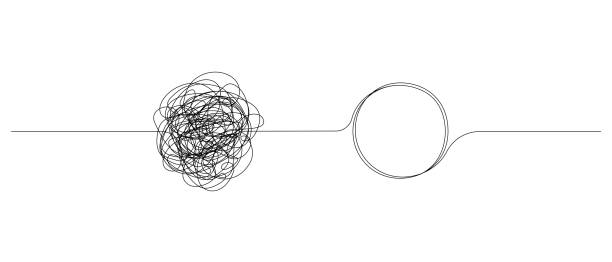Creative Problem-Solving Strategies
Creative problem-solving has always been a passion of mine. I have always believed that there is no such thing as a problem that cannot be solved. As someone who considers herself a problem-solver, I can tell you that there's nothing more satisfying than finding a solution to a tricky issue.
I love the challenge of coming up with innovative solutions to problems that may seem impossible at first. Whether it's a work-related problem or a personal one, creative problem-solving strategies can make all the difference.
But where do you start? How do you go about solving a problem creatively? And how can you be sure that your solution is the right one? These are all questions I've asked myself in the past, and I'm here to share some of my findings with you.
First things first, what is creative problem-solving?
At its core, creative problem-solving is the process of generating innovative ideas to overcome challenges or obstacles in a way that is both effective and efficient. It involves thinking outside of the box and considering alternative solutions that may not be immediately obvious.
But where do we even begin when we are faced with a problem that seems insurmountable?
As much as we'd like to believe that creativity is a magic power that some people are born with and others aren't, the truth is that creativity is a skill that can be developed. And like any skill, it takes practice. So if you want to become a creative problem solver, you need to be willing to put in the work.
One of the best ways to start is by asking questions. Lots of questions. When faced with a problem, don't just look for a solution. Instead, ask yourself what the problem is, why it exists, and what might be causing it. The more you can understand the problem, the better equipped you'll be to solve it.
Once you have a solid understanding of the problem, it's time to start brainstorming. This is where you can get really creative. Don't be afraid to come up with wild and crazy ideas, even if they seem impossible. Sometimes the craziest ideas can lead to the best solutions.
But don't stop at just one idea. Try to come up with as many as possible, even if they seem silly or impractical. You never know which idea might spark a better one or lead you down a path you hadn't considered before.
Now that you have a bunch of ideas to work with, it's time to start evaluating them. This is where you need to be honest with yourself. Which ideas are feasible? Which ones have the potential to solve the problem in the most effective way? And which ones just aren't realistic?
It's important to remember that not every idea will be a winner. Some may need to be discarded or tweaked. But that's okay. The more ideas you have, the better your chances of finding a solution that works.
Another helpful strategy is to break the problem down into small manageable parts and approach the problem from different perspectives. This can help us to identify specific areas where we can focus our creativity and problem-solving skills then we can often uncover new and innovative solutions that we may not have considered otherwise.
Sometimes we get so caught up in our own assumptions and beliefs about a problem that we can't see it from any other angle. By taking a step back and looking at the problem from a fresh perspective, you can identify new features or functions that we may not have thought of before.
Another great way to be a creative problem solver is to collaborate with others. Sometimes, two heads really are better than one. Bouncing ideas off someone else can lead to new insights and perspectives that you might not have thought of on your own.
But don't just collaborate with people who are exactly like you. Diversity of thought is key. Talk to people with different backgrounds, experiences, and viewpoints. You never know what kind of ideas they might bring to the table.
But what about when we get stuck? What do we do when we hit a creative roadblock? One strategy is to take a break and come back to the problem with a fresh mind. Sometimes we need to step away from a problem for a while in order to let our subconscious mind work on it in the background.
During this time, we can engage in activities that help us to relax and clear our minds, such as going for a walk or doing a puzzle. When we come back to the problem, we may find that we have new insights or ideas that we wouldn't have thought of otherwise.
Finally, don't be afraid to take risks. Sometimes, the best solutions are the ones that are a little bit risky. They might not be the safest or most comfortable option, but they could be the one that leads to the biggest payoff.
Of course, it's important to remember that not every problem can be solved using the same creative problem-solving strategies. Different types of problems may require different approaches, and we may need to be flexible and adaptive in our thinking in order to come up with the best solution.
But that's the beauty of creative problem-solving. It's about taking risks, trying new things, and learning from your mistakes. However, by developing a toolbox of creative problem-solving strategies and techniques, we can become more effective problem-solvers overall.
In conclusion, if you want to be a creative problem-solver, you need to think outside the box, explore alternative solutions, and take risks. It's not always easy, but the rewards can be huge. So the next time you're faced with a tricky problem, don't panic. Instead, embrace your creativity, approach it with an open mind and a willingness to think creatively, and tackle the problem head-on. You might just surprise yourself with what you're capable of.
Thanks for reading.








































